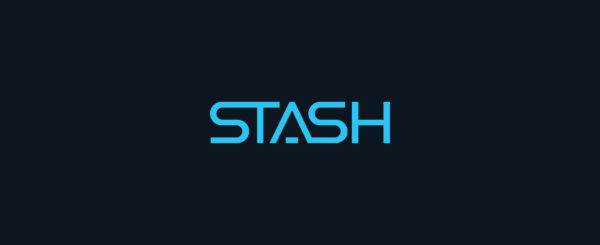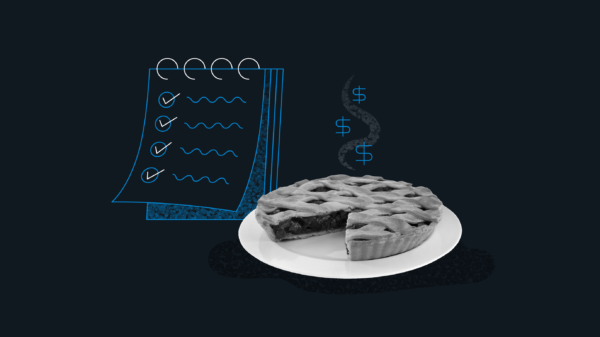Apr 24, 2020
Conquer Your Financial Demons with this 5-Day Challenge
Prioritize your finances with a new task every day for a week.

April is Financial Literacy month, and you’ve been chosen for a serious quest: It’s time to slay your financial dragons!
As a newly minted financial warrior, you’re the only one with the ability to destroy your money fears. “How,” you may ask? The mission, should you choose to accept, is to complete five financial challenges over the course of five days. Each day, we’ll unlock a specific money task for you, so make sure to come back to this page as we reveal the next step in your quest for financial preparedness.
To get started, you’ll need a pen and paper (or computer, if you prefer). Sword optional.
Day 1: Build a map for your mission.
You have to start somewhere. If you’re going to conquer your financial demons, you need to know how to find them first. Enter your financial map, also known as a budget.
Your budget should guide you to financial goals such as short-term savings and retirement as you navigate the remainder of this financial challenge.
Not everyone’s budget will look the same. There are several different budget strategies you can use including the envelope method, the zero-sum budget, and the 50-30-20 budget. The first step for budgeting is to understand out how much money you have coming in every month and then to figure out how much you need to spend, how much you want to spend, and how much you want to save or invest.
The sample budget below uses the 50-30-20 method, in which you break down your expenses into three categories: 50% for “needs”; 30% for “wants”; and 20% for savings. You can adjust the percentages to fit your own life and priorities.
Day 2: Tame your debt dragon.
With your financial map in hand, the real journey begins. You’re ready to face down your first mortal enemy: debt.
Paying down debts, including credit card debt, and loan payments, should be part of your budget. So make sure the budget you made yesterday includes at least the minimum–and hopefully more–you have to pay each month.
Staying on top of monthly payments can prevent you from falling deeper into debt, and from wrecking your credit. If you have more debt than you’d like to, make a plan for how you’re going to attack it and get started. If you get a sudden influx of cash such as a tax refund, consider using some of it to make a big payment.
Two strategies for paying off debt are the snowball method and the avalanche method. The snowball method is when you start by paying off your smallest loans and debts first, and gradually working your way up to larger debts. The logic behind this method is that by starting small and tackling your smaller debts first, you’ll build the confidence to manage your debt as you go. That way, when you start to pay off bigger debt amounts, they won’t be as intimidating.
On the other hand, the avalanche method is when you start paying down your debts according to interest rates. Start with the loan that has the highest interest rate and work your way down through to the loan with the lowest interest rate. The logic behind the avalanche method of paying off debt is that higher interest costs you more money the longer you hold it. So, by paying off the higher interest rate debt, you’ll be saving yourself money in the long run.
Day 3: Avoid financial floods by shoring up short-term savings.
After you’ve tamed your debt—or made a plan to tame it—it’s time to stop getting caught in financial floods without savings to fall back on. Savings can come to the rescue when you face life’s inevitable money storms, even after you’ve completed this challenge.
Today, focus on short-term savings. Now more than ever, when markets are volatile and unemployment is high, it’s important to have both a rainy day fund and an emergency fund. These might sound like the same thing, but they’re actually different and you might consider creating both.
A rainy day fund should contain $500 to $1,000. This will let you pay for things that come up unexpectedly such as car repairs or medical costs without having to throw smaller expenses on your credit card, or take out a payday loan. Remember that once you dip into your rainy day fund, you should start putting more money into it again whenever you’re able.
Your emergency fund will be your back-up for if you have a major change in your circumstances, such as a layoff or a serious illness. An emergency fund should have money in it to cover your expenses for three to six months.
If you made the 50-30-20 budget yesterday, take a look at the 20% portion of that budget. You allocated 20% of your monthly net income to savings and investing. So part of that 20% should go towards saving for your rainy day fund and emergency fund.
Tip: If you want to put your money into different categories according to your savings goals, you can use partitions in your Stash account. You can create a partition for a rainy day fund and emergency fund, without opening new bank accounts.13
Day 4: Remember to pay the retirement troll.
Now that you’re a seasoned warrior, you might have guessed your next challenge. Once you’ve built a plan for the short-term, it’s time to think about the long-term by saving for retirement. In order to cross the bridge to the fifth and final challenge, you need to pay the retirement troll on a regular basis. The retirement troll, of course, is your retirement plan, such as a 401(k) or IRA.
When you start to save for retirement, you’ll first want to know how much money you will need once you stop working. You can use a retirement calculator like this one to help you find that amount. If you’ve already started saving for retirement, now is a good time to check those accounts to see how much you already have saved.
And when deciding how you’re going to save for retirement, you need to know the difference between an IRA and a 401(k) plan. A 401(k) is usually provided through an employer and can have an employer-match benefit. Contributions to a 401(k) are usually made on a pre-tax basis. You pay taxes on that money once you withdraw from the account in retirement, most often at age 70½.
An IRA is an individual retirement account that anyone can open up through a brokerage or financial institution. If you have a traditional IRA, you can make contributions to that account on a pre-tax basis. If you have a Roth IRA, you can make contributions with income after taxes have been deducted. When you withdraw from a Roth IRA in retirement, you won’t have to pay taxes on that money.
Figure out and how—and how much—you’re going to save for retirement and get started saving today. If you’re already saving towards retirement, see if you have room to increase your contributions.
Stash does not monitor whether a customer is eligible for a particular type of IRA, or a tax deduction, or if a reduced contribution limit applies to a customer. These are based on a customer’s individual circumstances. You should consult with a tax advisor.
Day 5: Claim your reward by investing.
After finishing the first four challenges, you can claim your reward—your final challenge! Try investing small amounts regularly in a diversified portfolio.
Regular investing is part of the Stash Way, which also includes investing for the long term and diversifying your investments. If you want to automate your investment strategy, Recurring Transactions allows you to automatically put money into a diversified portfolio.
The idea behind regular investing and Recurring Transactions is dollar-cost averaging (DCA), an investment approach where investors buy stocks, bonds, and other securities over a specified period of time—for example months or even years—using a fixed amount of money. When you invest the same amount of money on a fixed schedule, you’re buying shares, or fractional shares, at different prices instead of just one. That can give you a better price experience over time.
If you have room in your budget to invest small amounts of money, get started today. You don’t need a lot to begin. In fact, you can invest on Stash with just a dollar (or any dollar amount). And don’t worry about the price tag of a whole share in a stock or ETF. With Stash, you can buy a fractional share, or piece of one share, of an investment. You can research ETFs and stocks to decide how you want to invest.
If you’re already investing regularly, consider increasing the amount you invest, and automating your investments. And remember, you can start investing with any dollar amount on Stash.
Congratulations, warrior, on completing all of your tasks. The realm will be in touch soon.
Related Articles

The 2024 Financial Checklist: A Guide to a Confident New Year

9 Ways to Celebrate Financial Wellness Month

Budgeting for Young Adults: 19 Money Saving Tips for 2024

The Best Personal Finance Books on Money Skills, Investing, and Creating Your Best Life for 2024

What Is a Financial Plan? A Beginner’s Guide to Financial Planning

How to Save Money: 45 Best Ways to Grow Your Savings





